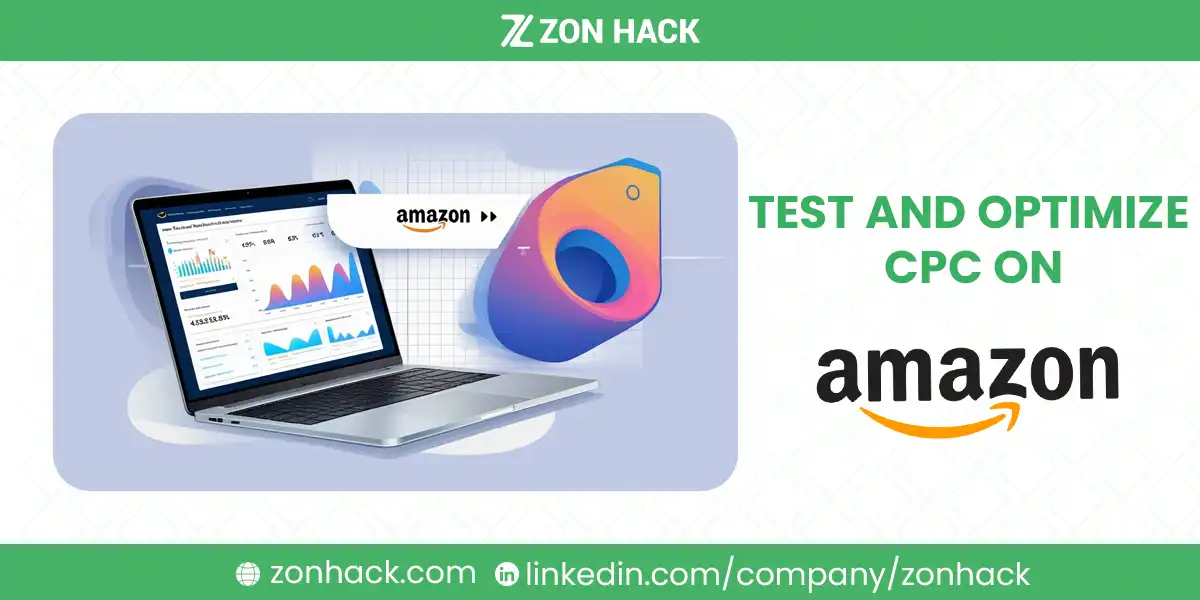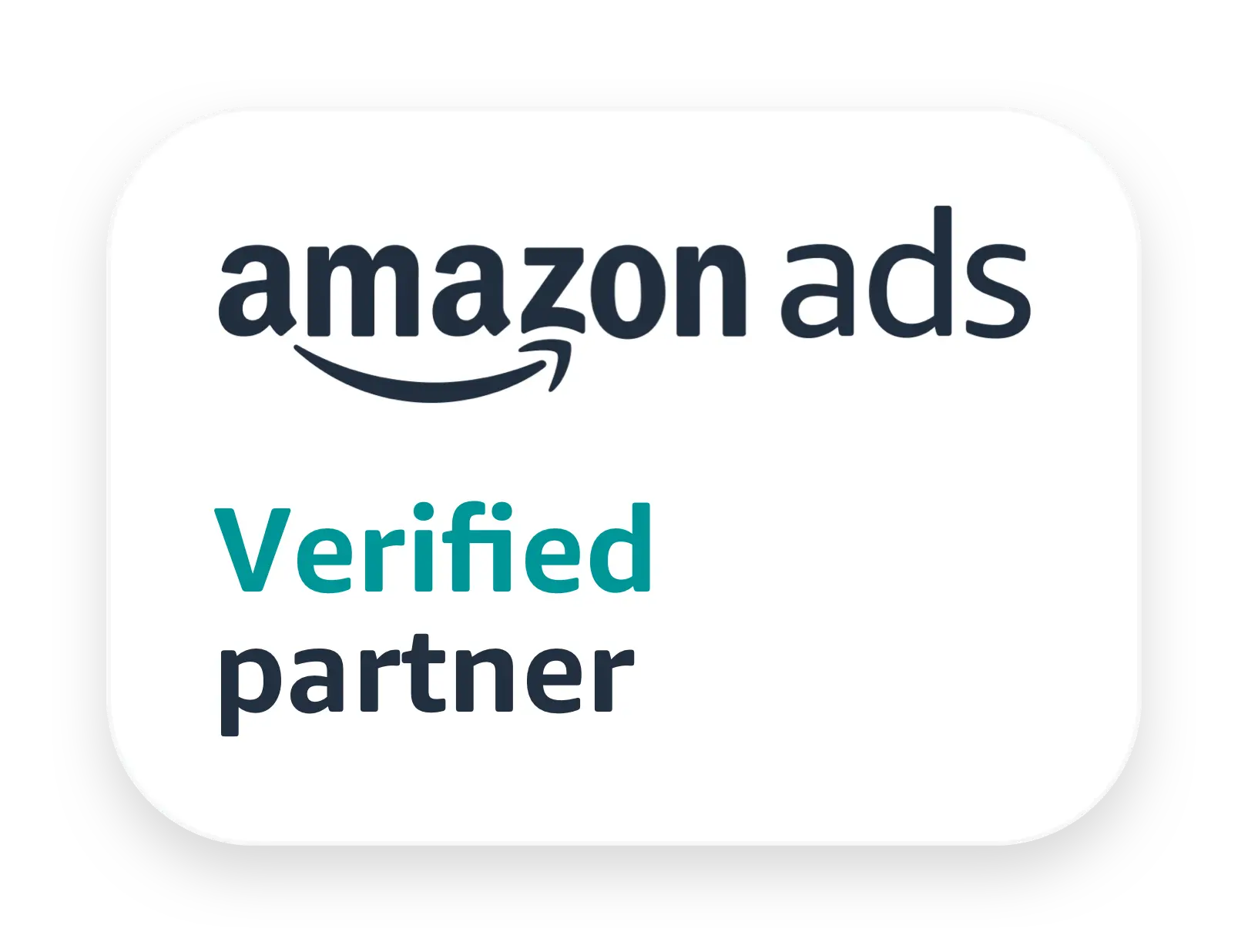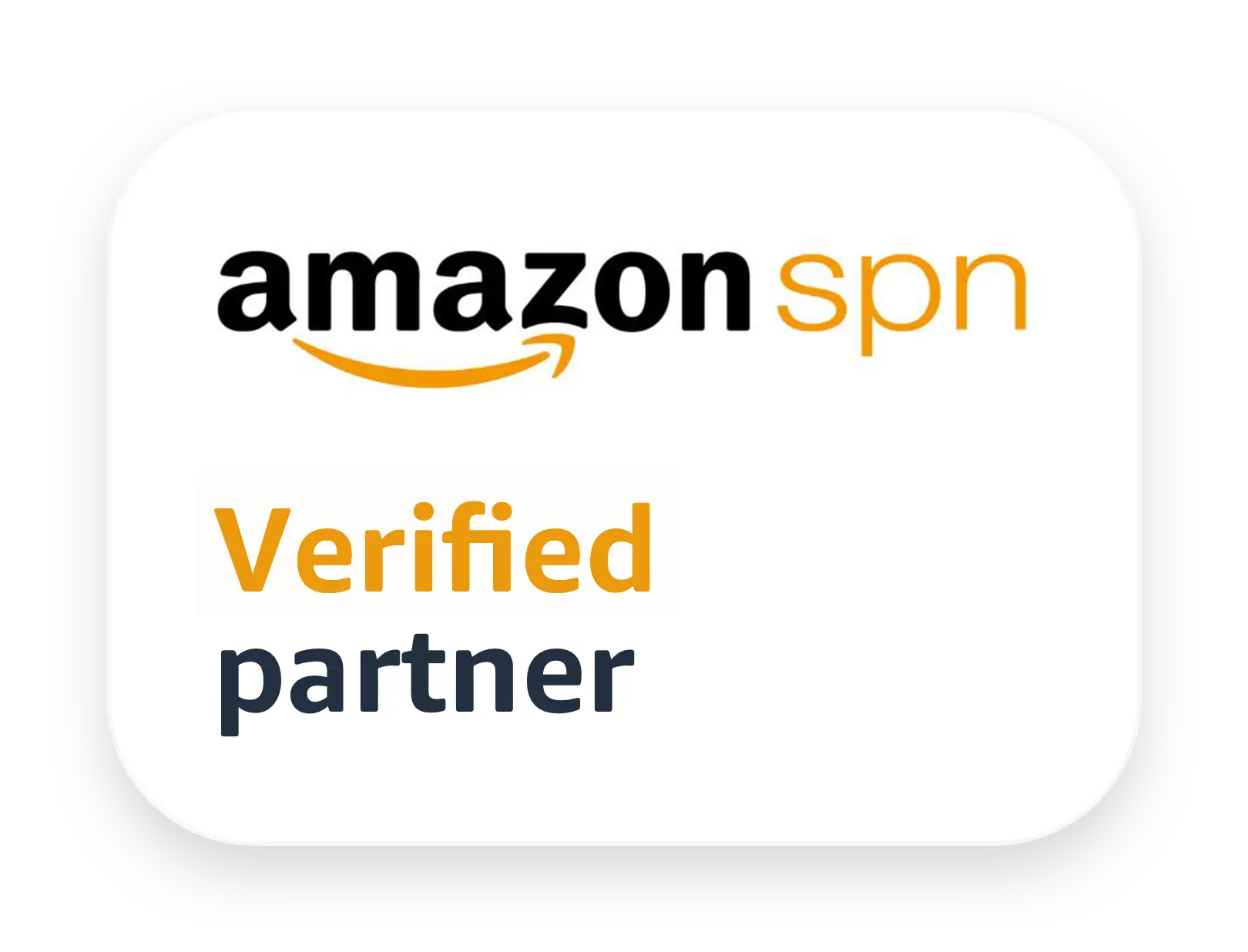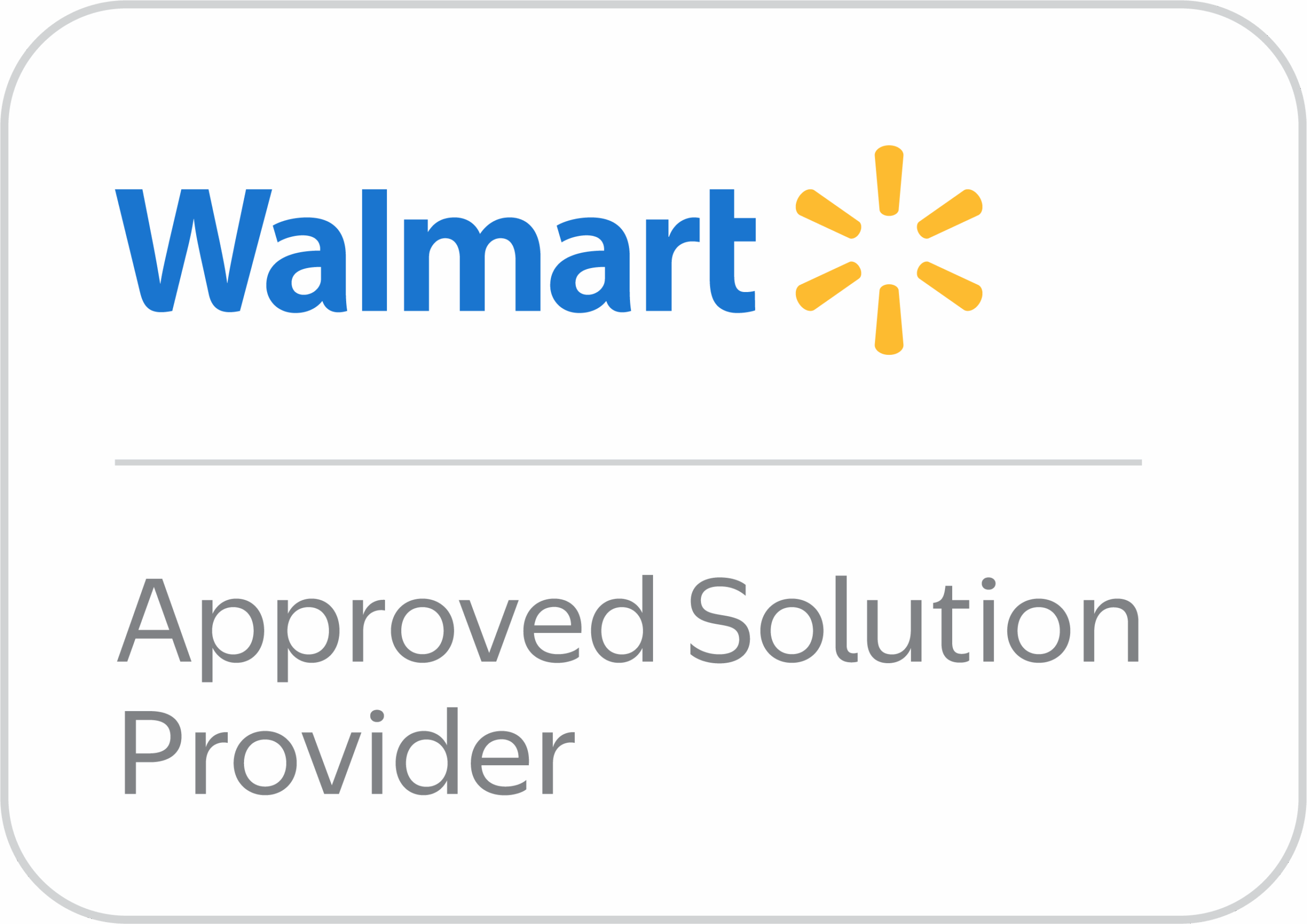Let’s get one thing straight: CPC (Cost-Per-Click) is not just a number—it’s a reflection of how well your Amazon advertising is working. Every time a shopper clicks on your ad, how much do you charge? That’s your CPC. And whether you’re running Sponsored Products, Sponsored Brands, or Sponsored Display, CPC applies across all Amazon ad types.
But here’s the part many sellers miss: a high CPC isn’t automatically a bad thing. What matters more is what happens after the click. If that click leads to a sale — or better yet, a profitable repeat customer — your CPC may be well worth it.
Still, with rising competition and increasing ad costs across nearly every category on Amazon, you can’t afford to ignore CPC anymore. Optimizing your CPC is no longer optional. It’s an essential part of running efficient, scalable campaigns.
At ZonHack, we help sellers find and fix CPC inefficiencies every day. Our approach is built around data, strategy, and sustainable performance, not just cutting costs blindly.
The Key Metrics That Influence (and Are Influenced by) CPC
CPC doesn’t operate in a vacuum. It’s tightly woven into your overall ad performance. Focusing only on lowering CPC without looking at the full picture can backfire.
Here’s how CPC interacts with other critical Amazon PPC metrics:
Click-Through Rate (CTR)
If your ad is getting impressions but not clicks, your CTR is low. That’s a red flag — not just for poor ad performance but also for Amazon’s algorithm. A low CTR suggests irrelevant targeting or an underperforming creative, which can drive up your CPC unnecessarily as Amazon penalizes you for low engagement.
Conversion Rate (CVR)
Let’s say your CPC is decent, but your Conversion Rate is tanking. This usually points to product page issues, not bidding problems. If shoppers click but don’t buy, your CPC ends up costing more per sale.
Optimizing your listing is often the hidden lever behind sustainable CPC.
ACoS and ROAS
- ACoS (Advertising Cost of Sale) goes up if CPC rises without an equivalent rise in conversion.
- ROAS (Return on Ad Spend) helps you decide whether a high CPC is acceptable. A strong ROAS? You might have room to bid higher.
Impressions and Spend
Low impressions but a decent CPC? You may be underbidding. High spend but poor returns? You’re overspending on the wrong clicks.
ZonHack Tip: We don’t optimize CPC in isolation. We audit the entire performance matrix — CTR, CVR, ACoS, ROAS, and more — to drive long-term profitability, not just short-term savings.
Why Lowering or Optimizing CPC Actually Matters
Let’s cut to the chase. Optimizing CPC helps you:
- Stretch your budget further without necessarily increasing your ad spend.
- Cut down waste from clicks that were never going to convert.
- Attract more qualified shoppers, meaning clicks that are more likely to lead to a sale.
- Scale your campaigns profitably instead of just throwing more money at the problem.
Amazon ads don’t need to be expensive to be effective, but they do need to be smart.
Proven Strategies to Test and Optimize CPC (ZonHack’s Core Playbook)
There’s no magic switch to lower CPC. Instead, it’s about layering small, data-backed improvements over time. Here’s how we approach it at ZonHack.
1. Refine Your Keyword Strategy
Strong keyword targeting is your first line of defense. Most sellers waste thousands each month targeting broad, irrelevant, or outdated keywords.
We start by digging deep:
- Use Amazon’s search bar, Helium 10, or our ZonHack keyword filters to discover high-intent search terms.
- Focus on long-tail keywords. These typically have lower competition and higher buying intent, which means lower CPC and better conversions.
- Continuously review your Search Term Reports. Cut underperforming keywords or shift them to negative keywords if they’re draining your budget.
- Split campaigns by match type. This gives you tighter control. We often isolate Exact Match performers into their own campaigns while using Broad and Phrase for discovery.
2. Master Negative Keyword Use
This one is non-negotiable. If you’re not actively managing negative keywords, you’re wasting money.
We recommend:
- Adding Negative Exact and Negative Phrase terms regularly based on actual performance data.
- Using campaign-level negatives for broad filtering and ad-group-level negatives for granular targeting.
- Excluding common low-intent terms like “cheap,” “free,” “used,” or competitor brand names — unless part of a defined strategy.
ZonHack Insight: In many accounts, we recover 15–25% of wasted spend just from a thorough negative keyword audit. That’s budget you can reallocate to high-performing keywords instead.
3. Use Smarter Bidding Strategies
Let’s break this down. On Amazon, you don’t pay your max bid — you pay just above the next highest bidder. That’s your Actual CPC.
So, how do you take control?
- If CPC is getting out of hand, test Amazon’s “Dynamic Bids: Down Only”. This helps you avoid overpaying when the algorithm doesn’t see conversion potential.
- Gradually increase bids on keywords with high CVR and low impressions. These are likely undervalued opportunities.
- Lower bids on high CPC keywords that aren’t converting profitably.
- Don’t change too many bids at once. Wait 2–3 weeks before drawing conclusions, especially on newer campaigns.
4. Fix Your Product Listings
Here’s something many sellers overlook: Your listing quality directly impacts your CPC efficiency.
Even if your ad targeting is spot-on, a weak listing will tank your CVR, driving up your effective CPC and ACoS.
At ZonHack, we treat listing optimization as part of CPC strategy. We improve:
- Product images that communicate value clearly.
- Titles and bullet points that match keyword intent.
- A+ content that builds trust and drives conversions.
- Review strategies to increase social proof.
If your listing doesn’t sell, your ad budget will burn — even if your CPC is “low.”
Proven Strategies for Testing and Optimizing CPC (ZonHack’s Core Playbook) (continued)
5. Use Amazon Reports to Your Advantage
Amazon gives you an arsenal of reporting tools, but most sellers barely scratch the surface. These reports aren’t just for data hoarders. They help you spot where CPC is bloated, where conversion is leaking, and where your ad dollars are quietly disappearing.
Here’s how we use them inside ZonHack accounts:
- Search Term Report
This one’s gold. Sort by Spend, then analyze ACoS and CVR. Cut terms with high CPC and no sales. Elevate keywords with low CPC and solid conversion — they’re often under-leveraged winners. - Targeting Report
Spot weak or duplicate keywords that are spreading your bids too thin. Identify which match types are actually performing. You might be surprised — Broad match often bleeds spend if not actively managed. - Placement Report
Top-of-search multipliers can make or break your CPC. We often dial them down for high CPC/low ROI campaigns and ramp them up for proven performers with low ACOS. - Advertised Product Report
Your product might be part of the problem. Some ASINs just don’t convert well via ads. If one ASIN is driving most of your ad spend but not your revenue, it may need listing work, or less budget. - Search Term Impression Share Report
This one’s advanced but powerful. It shows your visibility compared to competitors. If you’re getting low impression share for a profitable keyword, that might justify a higher CPC, not lower. You’re not bidding hard enough.
6. Implement Ongoing A/B Testing
Amazon PPC is dynamic. Your CPC today isn’t your CPC next month. That’s why A/B testing is essential, not optional.
Start with controlled, small tests:
- Raise bids slightly on high CVR, low impression terms — see if more visibility brings profitable conversions.
- Change only one variable at a time — whether it’s a bid, an image, a headline, or even a landing ASIN.
- Track KPIs religiously: CTR, CVR, CPC, ACoS. Don’t guess. Let the data decide.
Most importantly: give your tests time. At ZonHack, we recommend a 7–14 day test window minimum before evaluating results. That avoids reacting to short-term fluctuations.
7. Calculate and Use Your Break-Even ACoS
Here’s where things get real: You can’t optimize CPC without knowing your true break-even ACoS.
It’s not a guess. It’s a simple formula:
Break-even ACoS = (Total Cost of Goods Sold + Fees) / Sale Price
For example, if your total cost per unit (product + FBA + shipping) is $15 and you sell it for $30, your break-even ACoS is 50%. That means you can afford to spend up to $15 in ads per sale — but no more.
Knowing this gives you a hard limit. You don’t need to ask “Is my CPC too high?” You’ll know.
This is especially useful when calculating Max CPC bids. If you know your average conversion rate is 10%, and your break-even ACoS is 50%, then:
Max CPC = (Sale Price × Break-Even ACoS) × CVR
= ($30 × 0.5) × 0.10 = $1.50
That means you can afford up to $1.50 CPC for that keyword. Higher than that? You’re eating into profit.
At ZonHack, we calculate this per ASIN, per keyword cluster. That’s how you scale smart — not blindly.
8. Add Negatives to Auto Campaigns
Auto campaigns are great for discovery. But if you don’t trim them regularly, they become budget black holes.
Here’s what you should do:
- Harvest converting keywords from auto campaigns regularly — and move them into manual campaigns for more control.
- Then — and this is the part many sellers forget — add those exact same terms as Negative Exact in the auto campaign. That stops Amazon from wasting budget re-targeting a term you’re already targeting manually.
This technique — called keyword harvesting and negation — is one of ZonHack’s core optimizations. It keeps discovery fresh, avoids cannibalization, and refines CPC automatically over time.
Best Practices to Keep CPC Under Control
You don’t need fancy tricks. You need consistent discipline and a clear system. These are some of the fundamental principles we teach and implement at ZonHack:
Don’t Set and Forget
Amazon isn’t passive income. Check campaigns every 7–10 days, especially if your CPC is trending upward.
Stay Updated
Amazon adds and tweaks ad features often. If you’re not testing new targeting options or bid strategies, you’re falling behind.
Keep Campaigns Clean
Group keywords by match type and intent. Don’t dump 50 keywords into one ad group and expect clarity. A messy structure means messy data — and messy CPCs.
Use Regular Audits
Every account we manage goes through ZonHack’s structured audit framework. We check campaign types, ASIN performance, CTR/CVR benchmarks, and keyword overlap to find CPC leaks.
Watch for External Factors
CPC changes seasonally. Prime Day, Q4, back-to-school — competition spikes, and so do costs. Always compare YoY, not just WoW.
Tools & Services to Help (When Manual Isn’t Enough)
Manual CPC management can only take you so far. At scale, you need the right tools and the right minds behind them.
Notable Tools Worth Using
| Tool | Strength |
| Helium 10 Adtomic | Smart bidding AI + budget rules |
| SellerApp | Keyword & negative tools, filters, automation |
| Sellerboard | Profit-focused analytics dashboard |
| Ad Badger | CPC tracking, bid automation, and historic trends |
These tools are valuable, but they don’t replace strategy. They need input from real campaign logic, real experience, and product-level understanding.
What ZonHack Offers
We built ZonHack specifically to help Amazon sellers like you scale efficiently, cut waste, and turn campaigns into profit centers.
What we bring to the table:
- In-depth campaign audits with action-ready findings
- CPC reduction roadmaps tailored to your product and goals
- Full-service PPC management with weekly testing & optimization
- Listing audits + conversion optimization to improve ad efficiency
With ZonHack, your CPC isn’t a mystery, it becomes a lever you control.




